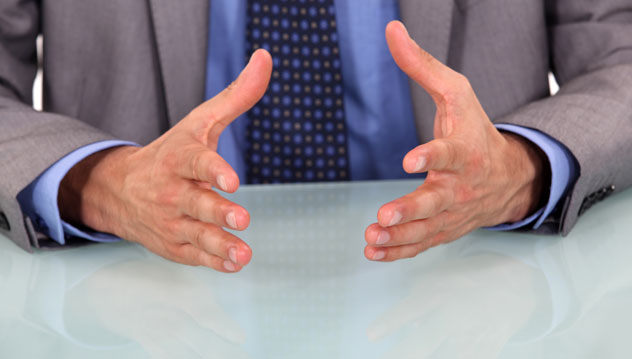Giving a limp handshake, letting your eyes wander and fidgeting are just a few of the blunders that can botch your success at a job interview.
Non-verbal communication can be judged just as much, and sometimes even more harshly, than the responses you give to interview questions. It can even be the single factor that helps hiring managers decide between equally qualified candidates.
“The most important idea in a job interview is to project confidence and professionalism,” says Heather Krasna, author of Jobs That Matter: Find a Stable, Fulfilling Career in Public Service (JIST publications).
“Practise interviewing in front of a mirror, on video or with a friend or career coach until you feel a bit more comfortable,” she says.
Krasna offers the following tips for positive non-verbal communication:
Handshake
A firm handshake is considered a sign of confidence. Take the other person’s hand in your right hand (don’t use both hands) so that the space between your thumb and first finger touches theirs. Give a firm, but not crushing squeeze, and shake the person’s hand up and down slightly, once. If you have sweaty hands, be sure to dry them before your interview.
Posture and Distance
When sitting in a chair, sit up straight or lean forward slightly (don’t slouch). If you cross your legs, do it so that one knee is stacked on top of the other or cross your ankles. (Do not cross your legs so that one foot is on top of your other knee.) Alternatively, keep both feet on the floor. Do not stretch your legs out in front of you or sit with your legs spread far apart — it looks too casual.
When standing near someone, about three feet of distance is standard in most parts of North America. Standing closer than this can be uncomfortable for others.
Arms and Hands
You can “talk with your hands,” but not to the extent of distracting your interviewer. Sitting with your arms crossed in front of you can look defensive. Instead, try to have a more open posture. Don’t fidget, play with your hair or pen, or bite your nails.
Eye Contact
Look in the eyes of the person interviewing you, but don’t stare intensely.
Looking down or away frequently gives the impression of confusion or of not being confident. Rolling your eyes up is considered a sign of disrespect.
Smile
Smiling shows you are friendly and that you are enthusiastic about the position. Smile at the beginning and the end of the interview at a minimum. The importance of smiling can’t be emphasized enough.
Mirroring
Take note of the posture and expressions of your interviewer and adopt some of his or her tone. Be careful though, even if an interviewer is quite friendly and casual, that does not mean you should be too casual.
Cultural Customs
“Non-verbal communication is quite culturally defined,” Krasna says. “If you are interviewing across cultures, be sure to know what is expected of you.”

